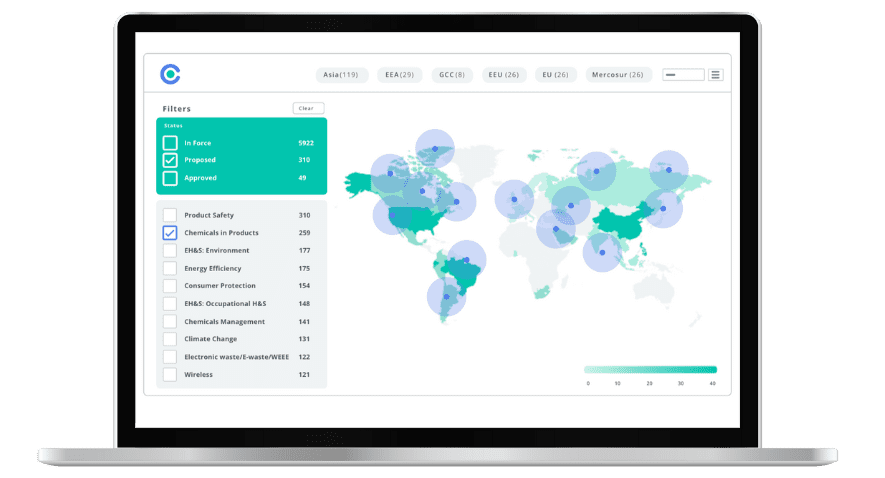
Power Tools: Latest Regulatory Developments in the EU, UK and China

This blog was originally posted on 2nd July, 2024. Further regulatory developments may have occurred after publication. To keep up-to-date with the latest compliance news, sign up to our newsletter.
AUTHORED BY JOYCE COSTELLO, SENIOR REGULATORY COMPLIANCE SPECIALIST, COMPLIANCE & RISKS
Introduction
Since we last discussed rules impacting the power tools industry in March, some significant developments have arisen that will present new compliance considerations for companies operating in the supply chain of these products.
To serve as a useful reminder to interested parties, we have summarized the most pressing of these below, which will impact parties supplying power tools to the UK, EU and China.
UK
Continued CE marking recognition confirmed
The continued recognition of the CE mark and EU declaration of conformity is now on firm legislative footing, standing to benefit, among many others, suppliers of power tools to the UK.
The Product Safety and Metrology etc. (Amendment) Regulations 2024 will ensure that the same declaration of conformity used to market tools in accordance with EU regulatory requirements will also be accepted in the UK, provided that it is translated into English, lists the regulations met and indicates how these have been met.
Businesses who wish to assess products in accordance with UK requirements and use the UKCA label may also use this approach to product conformity. These Regulations also provide that in respect of Restriction of Hazardous Substances (RoHS), exemptions used based on EU legislation will be recognized for products supplied to the UK, where an applicable exemption also exists under UK law.
Flexible marking for power tools
The Department of Business and Trade has delivered on its commitment to introduce legislation enabling digital labeling for manufacturers who choose the UKCA route to compliance, having laid the Product Safety and Metrology etc. (Amendment) (Marking and Labeling) Regulations 2024 before Parliament in May.
Under the ‘trade-liberalizing’ measure, from 31 January 2025 certain marking and information requirements may be provided digitally as an alternative to the physical label for most manufactured products. Access to the following marking and information may be given through a digital link: UK conformity marking, manufacturer details, importer details, responsible person details and UK Declaration of Conformity access to such marking and information through a digital link.
DBT intends these labeling easements to enhance business owing to their cost-saving and productivity-enhancement potential.
Digital statement of compliance possible under the PSTI Act
Consumer connectable or smart products sold on the UK market have since 29 April 2024 needed to meet minimum security requirements, including passwords, reporting security issues and minimum security update periods. The new security regime was introduced under the Product Security and Telecommunications Infrastructure (Product Security) Act and its implementing regulations. Products must be accompanied by a statement of compliance (SoC), and it now appears that businesses are benefiting from flexibility in meeting this obligation. While a paper document will patently be acceptable the regulator is not insisting on a hard copy. Delivery by digital means is being facilitated, and so compliance can also be satisfied by way of a QR Code that leads to the digital SoC.
China
New safety standard for lithium ion cells and batteries used in power tools
MIIT is in the process of formulating a new standard to regulate the safety of lithium ion cells and batteries used in power tools, with an estimated project period of 24 months. This is the result of a decision of the State Council that lithium-ion batteries and battery packs used in electronic and electrical products associated with higher safety risks should be included in mandatory certification management.
Presently, apart from for SJ/T 11808-2022, China does not have a safety standard regulating lithium-ion batteries and battery packs for power tools specifically. The proposal intends to use the technical content of SJ/T 11808-2022 as a basis for the new standard (i.e. it would convert the industry standard to a mandatory GB standard), while absorbing technical content that can be referenced from relevant standards such as GB/T34570.1-2017.
The main technical contents will include electrical and environmental safety of batteries and battery packs, system protection circuits, consistency requirements, safety of high voltage battery packs, structure, abnormal operation and mechanical strength tests.
Producers of the following power tools can expect to be impacted by the measure:
- Drilling tools, such as electric drills and electric hammers;
- Fastening tools, such as impact wrenches and electric screwdrivers;
- Grinding tools, such as angle grinders and straight grinders;
- Cutting tools, such as electric saws;
- Polishing and other tools, such as heat guns and garden tools.
Alignment with latest version of CISPR 14-1:2020
Revised EMC testing requirements for power tools will apply from 1 June 2026. GB 4343.1-2024 was published on 28 May 2024 with a view to maintaining the consistency of national requirements with international standards, and is as such an identical adoption of IEC standard CISPR 14-1:2020 Electromagnetic compatibility – Requirements for household appliances, electric tools and similar apparatus – Part 1: Emission.
EU
Publication with restrictions of harmonized standards for electric motor-operated hand-held tools
In May 2022, Germany raised a formal objection to harmonized standard EN 62841-1:2015, as corrected by EN 62841-1:2015/AC:2015, and harmonized standard EN 62841-2-11:2016, as amended by EN 62841-2-11:2016/A1:2020, to the effect that those harmonized standards fail to satisfy the essential health and safety requirements set out in points 1.2.3. and 2.2.1. of Annex I to the Machinery Directive 2006/42/EC. Germany argues in particular that harmonized standard EN 62841-1:2015 (as corrected) and harmonized standard EN 62841-2-11:2016 (as amended), both covering hand-held electrical machines such as jigsaws, do not provide sufficient protection against unintentional starting after voltage loss, as required under the Directive.
The Commission has agreed with the rationale grounding the objection. However, given that the harmonized standards were already published in the Official Journal, it has determined that the references should be maintained and be qualified by the appropriate restrictions. This has been reflected in Decision (EU) 2024/1256, published in the Official Journal on 30 April.
Stay on Top of Power Tools Regulations
Want to stay ahead of evolving regulatory developments and power tools regulations?
Accelerate your ability to achieve, maintain & expand market access for all products in global markets with C2P – Your key to unlocking market access, trusted by more than 300 of the world’s leading brands.
C2P is an enterprise SaaS platform providing everything you need in one place to achieve your business objectives by proving compliance in over 195 countries.
C2P is purpose-built to be tailored to your specific needs with comprehensive capabilities that enable enterprise-wide management of regulations, standards, requirements and evidence.
Add-on packages help accelerate market access through use-case-specific solutions, global regulatory content, a global team of subject matter experts and professional services.
- Accelerate time-to-market for products
- Reduce non-compliance risks that impact your ability to meet business goals and cause reputational damage
- Enable business continuity by digitizing your compliance process and building corporate memory
- Improve efficiency and enable your team to focus on business critical initiatives rather than manual tasks
- Save time with access to Compliance & Risks’ extensive Knowledge Partner network

Global RoHS Comparison Table
A high-level snapshot of RoHS rules impacting EEE today, in a format allowing direct comparison of the standard applied from the EU to UAE, India and beyond.


